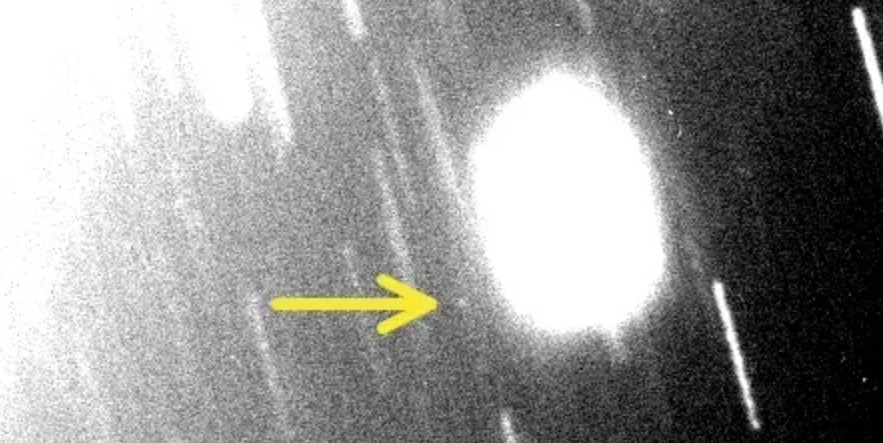Astronomers discover first new moon of Uranus in over two decades and two new moons of Neptune

The International Astronomical Union’s Minor Planet Center announced the discovery of three new moons, marking the first Uranian moon found in over 20 years, and two additional satellites orbiting Neptune, one being the faintest moon ever detected by ground-based telescopes.
The newly discovered Uranian moon, provisionally named S/2023 U1, is the ice giant’s 28th moon and measures just 8 km (5 miles) in diameter, making it likely the smallest among its lunar companions. It completes an orbit around Uranus every 680 days. Following tradition, it will eventually receive a name derived from a Shakespearean character.
S/2023 U1’s discovery was made using the Magellan telescopes at Carnegie Science’s Las Campanas Observatory in Chile on November 4, 2023, with follow-up observations confirming its orbit and allowing its identification in older images dating back to 2021.
The Neptunian moons, discovered through collaborative efforts involving powerful telescopes like Subaru in Hawaii and Magellan, add intriguing new members to Neptune’s satellite family. The brighter moon, provisionally designated S/2002 N5, spans approximately 23 km (14.3 miles) and takes nearly nine years to orbit Neptune. The fainter companion, S/2021 N1, is around 14 km (8.7 miles) wide and has a lengthy orbital period of almost 27 years. Both moons, reflecting their faint and distant nature, required extensive observations under pristine conditions to confirm their orbits. They will be named after Nereid sea goddesses from Greek mythology, aligning with Neptune’s naming conventions.
The discovery process for these celestial bodies involved taking multiple five-minute exposures over several hours across multiple nights, and then layering these images to compensate for the moons’ motion relative to the background stars. This innovative technique allowed the astronomers to penetrate deeper into the space near Uranus and Neptune than any previous observation.
These moons’ distant, eccentric, and inclined orbits suggest they were captured by the gravitational pull of Uranus and Neptune during the early chaotic years of the Solar System, a time marked by significant celestial movement and collisions.
The identification of these moons completes the inventory of Uranus and Neptune’s satellites down to sizes of 8 and 14 km (5 and 8.7 miles) respectively, showcasing the power of current astronomical technologies and setting the stage for future explorations.
With potential space missions to these ice giants on the horizon, the new moons offer promising targets for further investigation, potentially unlocking more secrets about the formation and evolution of our Solar System.
References:
1 New moons of Uranus and Neptune announced – Carnegie Science – February 23, 2024
Featured image credit: Scott Sheppard

Commenting rules and guidelines
We value the thoughts and opinions of our readers and welcome healthy discussions on our website. In order to maintain a respectful and positive community, we ask that all commenters follow these rules.